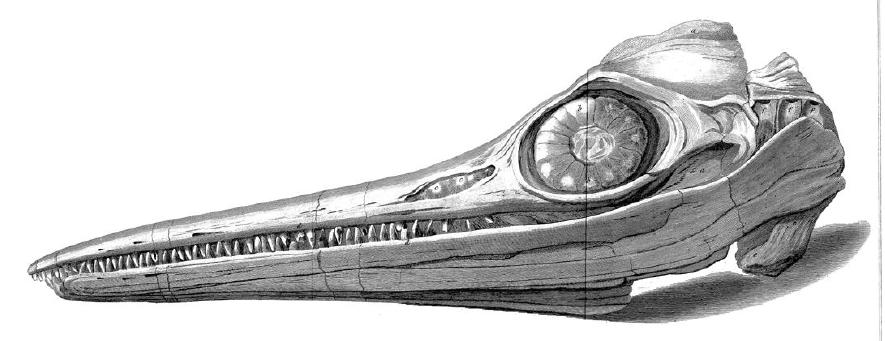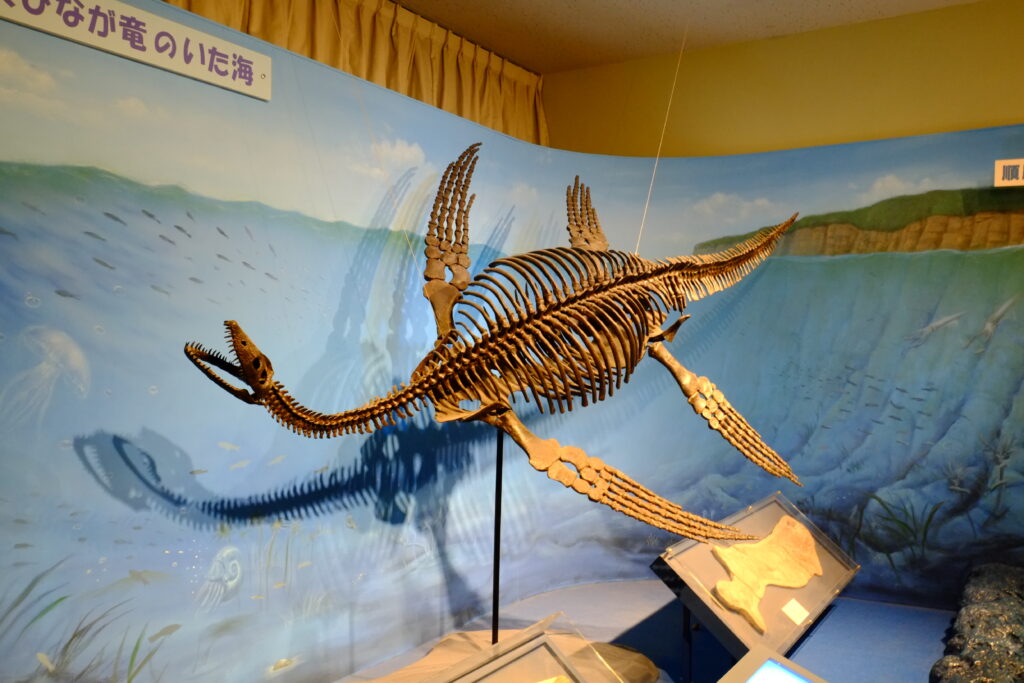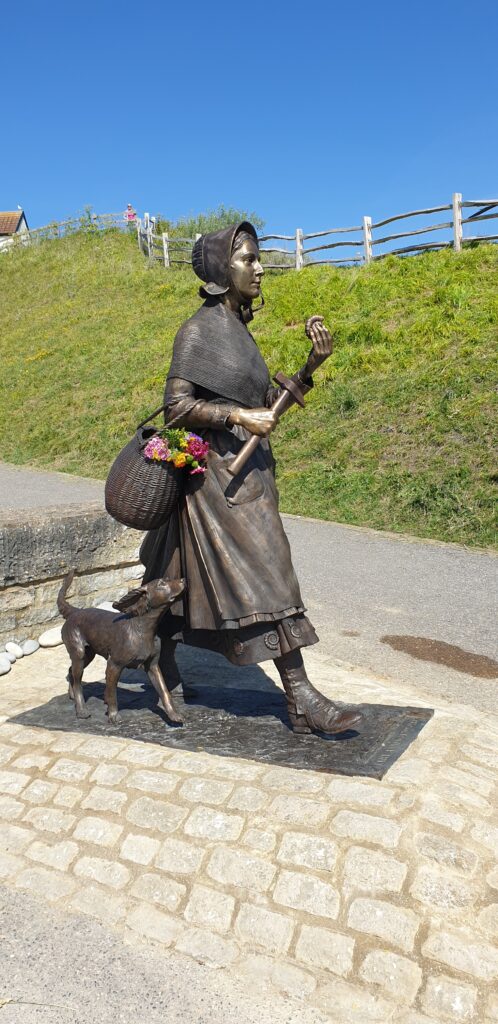When Mary Anning started collecting ‘curiosities’ in the 1800s, she was unknowingly creating an epic fossil collection. She became possibly the greatest fossil hunter of all time, and her discoveries pushed scientists thinking about prehistoric life and the history of Earth forward. This is the story of Mary Anning.
Mary Anning was born on the 21st of May 1799 in the small seaside town of Lyme Regis which is in Dorset.
She apparently had an extremely lucky escape as a baby when lightning struck the tree she was underneath whilst being held by her neighbour. Her neighbour, and the other two standing with her, died… but Mary survived. Imagine that happening to you. A shocking experience to say the least. Her older sister (also called Mary) wasn’t quite as lucky when she died after accidentally setting her clothes on fire.
Mary didn’t get to go to school very often as her family was poor and couldn’t afford to send her, but she didn’t let that stop her and taught herself to read and write.
Because of the lack of school, Mary spent a lot of time walking up and down the beach with her brother, Joseph, to try and find things to sell so they could buy food.
When she was 12 years old the two of them noticed a strange skull sticking out from the cliff. After managing to free it from the rock they thought it might be the skull of a crocodile.
It wasn’t known at the time but what they had actually found was the skull of an ancient reptile called an Ichthyosaur, which means fish lizard.

The Ichtyosaur’s skull was 1.2 metres (4 feet) long, but they couldn’t find the rest of its body. Can you imagine finding something that size the next you’re walking down the beach?
Ichthyosaurs were later found to have lived 250 million years ago before becoming extinct roughly 90 million years ago. This means they would have been around at the same time as the dinosaurs.
Mary found the body of the extinct beast a few months later and both were sold for a whopping price of £23.
There was no modern-day digging equipment back then so you can imagine just how long it would take to dig out the fossils.

The Anning family had a fossil shop to keep their finances afloat. Invertebrate fossils, ones that look a bit like a snail’s shell, were very common on the local beach and sold for a couple of shillings each.
Getting the rarer vertebrate fossils was more dangerous but often worth the risk to try and dig them out, not only for science but for bolstering your bank balance, as the £23 sale of the Ichthyosaur had proven.
The dangers came real when Mary’s dog, Tray, was killed in a landslide whilst Anning dug for fossils. There were more than a few occasions when she was almost crushed herself.
Mary quickly gained a reputation for discovering fossils. Every discovery seemed to be more unbelievable than the last. In December 1823 she found the first complete Plesiosaurus which was another sea creature from the Jurassic era of the dinosaurs.

In 1828 she found the first British example of the flying reptile Pterosaur- I’m sure these things have difficult names on purpose- they look a bit like a pterodactyl, but I’ll probably get in trouble for saying that. They were from the same era as the dinos.
Mary bought a house in 1826 which had space at the front for her fossil shop. Unlike a lot of fossil shops, she had an Ichthyosaur skeleton on display, certainly a great way to get people into your shop. That skeleton was actually bought by King Frederick Augustus II of Saxony.
the outsider
Because Mary was a woman she was never accepted into the scientific community. The Geological Society of London didn’t allow women to become members or attend meetings.
For this reason, and despite Mary knowing more about the fossils, it was male geologists who published all of her findings- but they all pretty much neglected to mention Mary’s name in these discoveries.
Quite rightly and understandably Mary became annoyed at this. Mary wrote in a letter…
‘The world has used me so unkindly, I fear it has made me suspicious of everyone.’
To not mention Mary in the discoveries was beyond appalling- she had been the one who had discovered them in the first place! They were all more than happy to use her expertise but gave her no credit. Mary led fossil-hunting treks on the beach and even crossed paths with a young Charles Darwin who was a student at the time. I have no doubt he was influenced by Mary Anning.
As 1830 came around, Anning found herself in financial difficulty as the demand for fossils declined. Her financial troubles had gone by the end of 1830 when she made a new discovery- the skeleton of a new type of Plesiosaur which sold for a whopping £200.
She did lose most of this money, and the rest of her life savings, towards the end of the decade due to bad investment but an old friend William Buckland who was a lecturer of geology at the university of Oxford persuaded the British Association for the Advancement of Science and the British Government to pay her £25 a year in return for her many contributions to science- shame they didn’t add her name to the discoveries, eh?
Because of her contributions to science Mary should never have been in any sort of financial trouble- something she battled with her whole life- if she had been male she would have been held in high regard, probably had a big fancy house and more money than she could count. It’s outrageous that because she was a woman this wasn’t the case.
death and legacy
Mary Anning died in 1847 from breast cancer at the age of just 47.
After her death, Henry De La Beche, who was president of the Geological Society, wrote a eulogy and read it at a society meeting- the first time this had ever been done for a woman.
Mary’s discoveries became incredibly important pieces of evidence for the existence of extinction which people had been arguing about for centuries.
Oh, and if you ever hear that the tongue twister, ‘she sells seashells’ is about Mary Anning- it’s not true.
She has a museum named after her in her home town which is definitely a sign of being an incredibly important part of Earth’s history.
But perhaps one of the coolest things to happen since her death, apart from her finally getting the credit she fully deserved, was when 11-year-old Evie Swine formed a campaign called “Mary Anning rocks” in 2018. Despite a global pandemic slowing plans down, money was raised and in 2022 a statue of the legendary fossil hunter was erected.

I don’t think I could end the story of Mary Anning any better than that statement.
Mary Anning rocks.
what to read next
If you’ve enjoyed this blog about Mary Anning then here are some blogs I think you will also like.
